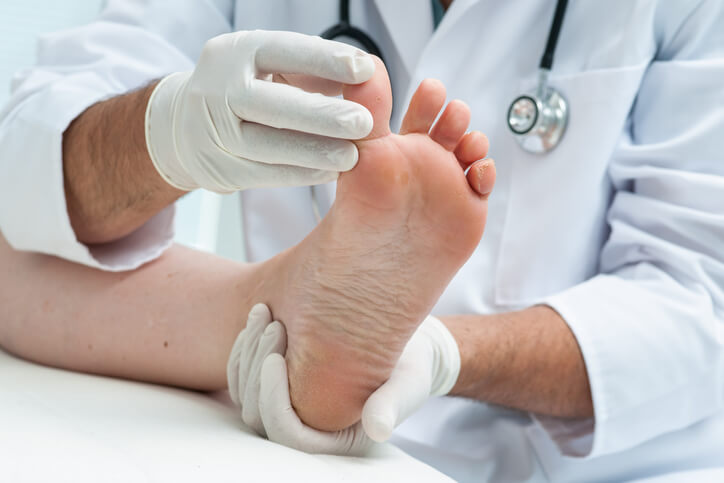Diabetic Footcare
Patients with diabetes face particular challenges to their feet. What would be minor annoyances to other patients—blisters, small cuts, ingrown toenails—can pose major health threats to those with diabetes. Diabetes delivers a double whammy: nerve damage associated with this disease can cause loss of sensation making it difficult to detect injuries and irritations, and reduced circulation makes it harder to heal infections and injuries. Observing some simple steps can help greatly reduce your risk.
- Inspect your feet every day (or have someone do for you). Report any blisters, swelling, redness, cuts, skin or toenail problems to our podiatrists, Dr. Howard L. Schultheiss, Jr. immediately by calling our Bel Air office at: 410-836-0131.
- Avoid abrasive brushes or scrunchies when washing your feet. Clean your feet daily using warm (not hot) water, a soft washcloth or sponge and a gentle soap.
- Dry feet completely after showering or bathing, being especially thorough with the spaces between your toes. This is where athlete’s foot is likely to develop and it loves moist places.
- Go for good socks. Consider special socks made especially for diabetic patients. Extra cushioning, no tight elastic tops or rough seams and material that is absorbent and wicks moisture away from your feet are all features that can help keep feet dry and protected.
- Moisturize the skin on your feet to prevent dryness and cracking (avoiding the area between your toes).
- Shake out shoes and socks before putting them on. Patients who experience a loss of feeling in their feet have been known to walk around all day with a pebble or other small object in their shoe which can lead to a wound.
- Use an antiperspirant on the soles of your feet if you tend to sweat excessively. Change your socks more than once a day if necessary to keep feet dry.
- Do not use a heating pad or hot water bottle on your feet.
- Keep nails cut straight across and not too short. Make sure edges are smooth, but do not file in a curved shape as this can lead to an ingrown toenail.
- Do not treat warts, corns, calluses or blisters on your own. All of these can quickly develop into an injury and become infected. Leave the treatment to the podiatrist.
- Don’t walk barefoot. This greatly increases your risk of injury and fungal infections.
- Schedule regular appointments with the foot doctor. Together you can help decrease the risks that diabetes poses to your feet and the rest of your body. Contact us today for an appointment.

